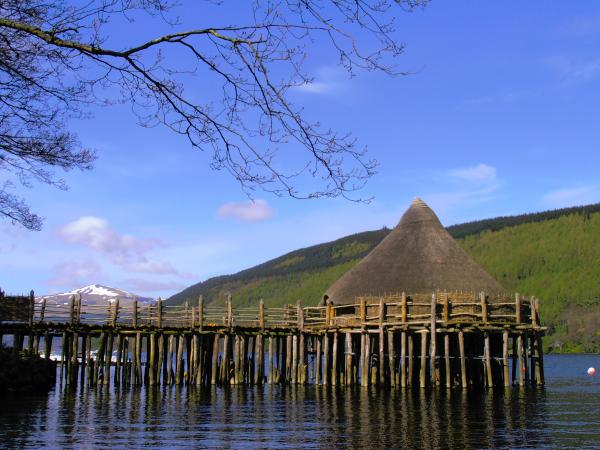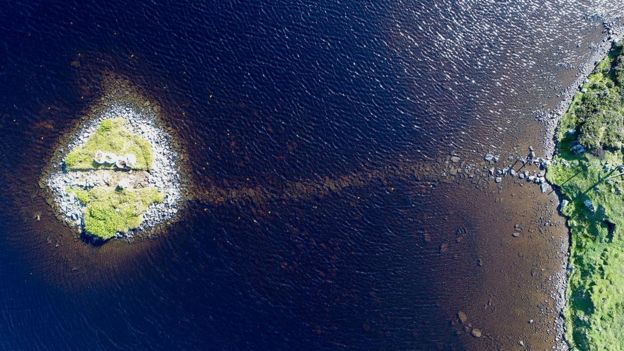Scottish crannogs thousands of years older than previously thought
In prehistoric times artificial islands were created in the waters of lochs, rivers and sea inlets of Scotland and Ireland. On these island were built ancient loch dwellings, known as crannogs. Some prehistoric crannogs were originally timber-built roundhouses supported on piles or stilts driven into the loch bed. However, in other places, a massive amount of work was undertaken. Tons of rock being piled onto the loch bed to make an island onto which a stone dwelling was then built. There are many hundreds of such crannogs in Scotland, although now most just appear as tree covered islets or submerged stony mounds.
Previously crannogs had been thought to have been constructed from the Iron Age period, at around 800 BC. However, there is an increasing amount of evidence that they could be far older. Using radiocarbon dating of four sites located in the Outer Hebrides (Scottish Gaelic: Na h-Eileanan Siar), new research by archaeologists has been published in the journal Antiquity. Archaeologists Dr Duncan Garrow, and Dr Fraser Sturt have discovered ancient crannogs dating back to the Neolithic period 3640–3360 BC. Making them older than the famous Scottish Neolithic site at Skara Brae, a village in Orkney inhabited between 3200 BC and 2200 BC. Also predating Stonehenge's stone circle erected in the late Neolithic period about 2500BC.







